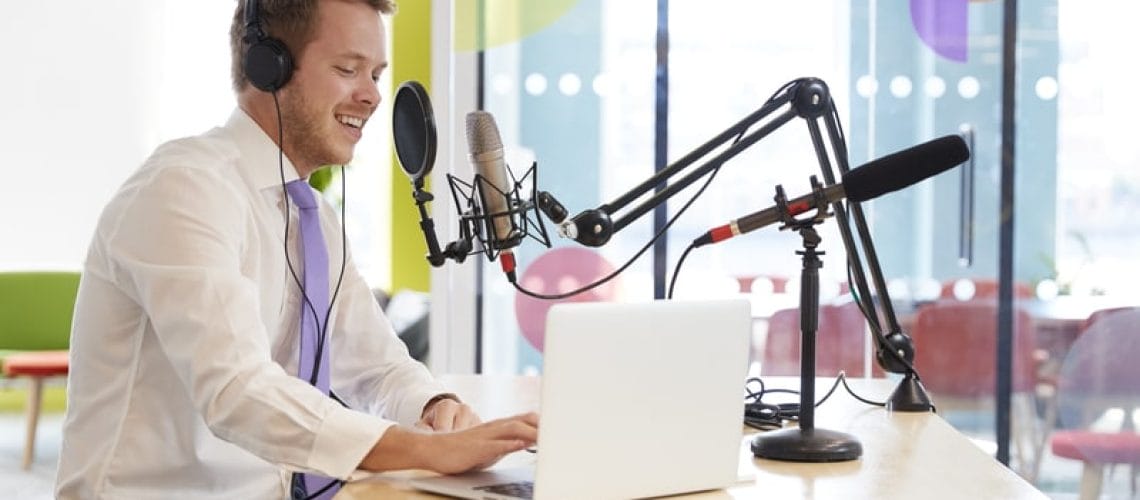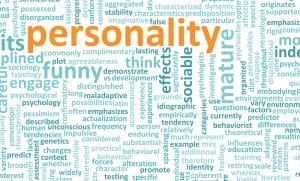With podcasts becoming almost mandatory for B2B marketing today, it’s frightening just how bad so many business-focused podcasts are. If I had to point to one overarching description of the problem, I’d say it’s a lack of focus on the intended audience—typically the company’s prospects and installed base. As a longtime technology journalist who started his career in network radio, I jumped on podcasts early on. (I created a weekly podcast series, called Internet World Radio, for B2B media company Penton way back in 1999.) In my experience, issues tend to crop up when marketing drives podcasts. The reason? These departments are manned by people who view customers quite differently than an independent journalist—or a prospective listener. Reporters see ourselves as representing that audience. We ask the questions your prospects would ask if they could. Another aspect of this problem is that marketers tend to examine today’s most popular podcasts, and then model their offerings after them. That approach would be perfectly reasonable were it not for the fact that many of those popular podcasts are B2C. From a content perspective, that’s the opposite of B2B. That all said, here are some topics to consider when creating B2B podcasts.
These tips and tricks will help fine-tune your podcasts to mesh best with your audience:
1) The B2C and B2B Difference Although there are certainly exceptions, many B2C podcasts focus on entertainment, whereas B2B podcasts typically focus on information. That distinction colors almost every podcast decision. If the interviewee is a celebrity actress, for example, the listeners who are true fans will want to hear as much as possible. It’s an enjoyable interaction. With B2B podcasts, the audience is most often employees in the trenches or senior executives. Either way, their love of a podcast will be based on how short it can be while still providing the data/insights they seek. That’s why a B2C podcast can be effective at 30 minutes or more, but B2B podcasts should top out at about 12 minutes.
2) Who Is the Audience? This basic question gets some frustratingly vague answers from companies pursuing B2B podcasts. For example, some will say they want to attract CIOs, CFOs, CISOs, CEOs and programmers/developers—without realizing that those people all have very different informational needs. Or they will want SMBs and Fortune 500 companies, which also sharply changes the ideal content. What if the company wants to reach many different audiences? The answer might be to create a series of podcasts, each of which is crafted precisely for a specific segment. Isn’t that exactly what marketing execs at P&G or Kraft would do if they wanted to reach different audiences?
3) Why Should I Listen? This is the classic “marketing think” problem. These professionals are fine with promotional content (“Buy our great product/service”), whether it’s from the company’s own employees or from its happy customers. Instead, do what journalists are forced to: Think about the content from the potential attendees’ perspective. Most of the podcasts I deliver are related to technology in some way, so the questions asked include “Why would the CIO care? Or the programmer? What about the CISO and the CFO?” I’m also fond of pushing for a surprise, meaning something that is not only unknown to your audience but contradicts what these folks think they know or believe. If you can deliver truly surprising insights, your audience will have a great reason to download and listen to your podcast. Too many B2B podcasts deliver information the company knows full well that much of the audience already knows—or at least assumes. Although that approach can sometimes work in an entertaining celebrity-focused B2C podcast, it is another example of why B2B requires a very different approach. Why would businesspeople bother listening to a podcast that will merely tell them what they already know? Here’s a secret: Even if you don’t find an explicit surprise, getting close will likely produce content far superior to what your team otherwise would have created—and your audience will appreciate it.
4) Moderator as Audience Proxy This is critical. Moderators are not there just to be nice to the guests. A moderator asks the hard questions the audience would ask—and insists on answers. Years ago, a journalist reporting to me was briefing me on a key interview he had done for a story. Prior to that, I had asked him to find out why the company being profiled had abandoned an earlier effort. His article quoted the person he asked as noting the reversal but not explaining the reason for it. When pushed, the reporter said, “I asked him that question and that’s exactly how he replied.” “Had I wanted that,” I countered, “I would have sent a stenographer. I sent a reporter so that you could get an answer, not merely a reply.” That journalistic example demonstrates the difference between a moderator and a good moderator. The latter not only asks the right questions but pushes for explicit answers—even if the answer is “I’m not going to tell you why we reversed our position.”
5) Conversation, Not an Interview An interview—rightly or wrongly—is widely seen as someone asking a bunch of questions and someone else answering them. There are many times when that approach is necessary. A B2B podcast isn’t one of them. When I do a podcast, I familiarize myself with the topic and the guest, but I usually prep only one question. It’s the initial question, and it’s generally very open-ended. For example: “You have argued that this strategy has to eventually fail. Why do you think that?” After that, it’s a conversation. The guest’s first answer directly prompts the second question, and so on. Questions will be along the lines of “How? In what way?” Depending on those answers, the next question might be more challenging: “You’re saying that this alternative approach would save money and be more effective. But didn’t Company XYZ try exactly that approach six months ago and it imploded?” The conversational approach truly lets the guest set the path, with the moderator questioning and probing along the way. Although this requires moderators to know the topic quite well—for instance, counter examples and the history of the space—they don’t need to be as much of an expert as the typical audience member. Still, moderators do have to be familiar enough to change course in real time if the interviewee’s answers warrant that. A podcast where the interviewee just answers pre-arranged questions usually sounds rehearsed and non-compelling.
6) Record as Though Live, But Make It Not Live To keep the conversation sounding natural, it’s important to not stop and start while recording the podcast. Post-production is where the magic takes place. For example, what happens when a question and answer goes nowhere? (Question: “When your company pulled operations out of Ireland, how did that impact overall strategy?” Answer: “Actually, that happened before I joined the company. I honestly know nothing about that.”) You cut it. While you’re at it, why not make the interviewee sound better and improve the pace of the podcast at the same time? You do this by removing every “uh,” “um,” “y’know,” lengthy pause and big breath, as well as anything that the audience could do without, such as a question that yields no useful answer. Sure, it takes time (you must be careful so the edits sound natural), but it can make a huge difference. The audience will thank you, and your guests will triply thank you.
7) Video Versus Audio Podcasts Both video and audio podcasts can work well in B2C, but I have found audio podcasts to be light years more attractive for B2B. There are exceptions, of course. If something is informationally rich and would be helpful to the audience—consider a medical podcast for surgeons where a new surgical technique is being discussed and there’s video of how it is done—that’s a good reason to consider a video podcast. On the other hand, just adding a link to that video may deliver 99 percent of the benefits with none of the downsides of video. What video downsides, you ask? Beyond the fact that it costs far more and takes far longer to produce, video is simply more restrictive. In a 12-minute audio podcast, I’ve sometimes had to make as many as 100 edits. In audio, these can be made easily and, if done properly, the result is seamless to the listener. In video, every edit needs to cut away to a visual or else the edit can appear jarring and obvious. That makes it impractical to do multiple edits. Plus, there are many environments where video isn’t practical but audio is. Think of prospects listening to your podcasts while working out or driving. So, audio is less expensive, can be processed far faster, is better for many environments and can be edited exactly as you want. Do you still want to do the podcast as a video?
8) Consider Adding a Commercial One of the biggest challenges with B2B podcasts is getting marketers comfortable with doing candid, informationally valuable discussions that don’t include a hard sell. It’s called thought leadership, and its value is well understood. That, however, doesn’t stop executives from pushing back. (We’ve all heard the question “Tell me again why we’re paying for this?”) By giving marketers a commercial in the middle of the podcast, it satisfies their desire for a hard sell and makes them comfortable with content that solely delivers thought leadership. I’ve found success with both funny commercials (my favorite—nothing sells like humor) and CEO segments (where the chief executive explains why the company is awesome, in the classic “Men’s Warehouse” way). B2B audiences are also comfortable listening to commercials and aren’t put off by them, as they would be if the interviewee simply starts selling. Just one “And that’s why companies really should buy our products, especially the XYZ9000” and you’ve lost the B2B listener. Say the same thing in a funny commercial, and you’ll be fine. Go figure.
9) Distribution Strategy Decisions Now that you’ve created your podcast series, taking each specific audience into account where necessary, where do you place it so people can download and listen? A lot of companies deal with distribution as an afterthought, when in fact it’s one of the most important aspects. Let’s start with your audience strategy. Is this podcast series intended to talk to your installed base or your active prospects or both? Is the goal to attract new prospects, as well as folks who might never have heard of your company? A successful B2B podcast distribution strategy has two parts: internal and external. Internal is your company’s sites and its social media. Place the podcast on your web and mobile sites, and make sure you communicate with all your followers that it’s there. Giving the series a dedicated space on your homepage is paramount. In addition, taking the name of the podcast, grabbing that URL (for example, www.thebrilliantinsightspodcast.com), and then mapping it back to your podcast page is essential. But internal-only preaches to your choir, if you will. If this series is created solely for either your installed base or your installed base as well as your existing active prospects, internal distribution may be all you need. If, however, your goal is to attract new prospects, then you need to go external. External is where you place your podcasts on iTunes, Google Play, TuneIn, Stitcher, SoundCloud and other podcast sites. That way, potential prospects who visit those sites can stumble on your series.
10) Let People Sign Up Although obvious, some companies forego this step. That’s a shame, because it can be a powerful marketing tool. At the bottom of your podcast page, be sure to say when you broadcast the shows (for example, “We post new shows every Thursday at 10:00 AM Eastern”) and give folks a chance to sign up. This will then generate an email newsletter that tells prospective listeners—before the air date—the upcoming guests and topics. Make sure you capture that surprise element we discussed in the descriptions. In short, give people a reason to download your podcast. Here’s a bonus: Given that the people who sign up want to know that information about upcoming shows, the open rate can be far higher than your marketing people are used to. Plus, if you’re already sending that email, there’s no harm in adding other select material. Deliver what you promise, and some of those marketing messages will be well tolerated.
11) Frequency To get people to sign up—which delivers leads—they must first listen to some of your shows and like them. In my experience, getting people to subscribe to a monthly podcast—or, worse, an every-other-week podcast—is far more difficult than simply doing a weekly show. Blame TV; people are used to new shows appearing once a week. Strictly following these tips and tricks won’t necessarily deliver a first-rate podcast series. That falls to the cleverness of your guests, the careful selection of surprising topics and skillful moderating and editing. But it can’t hurt, either.






